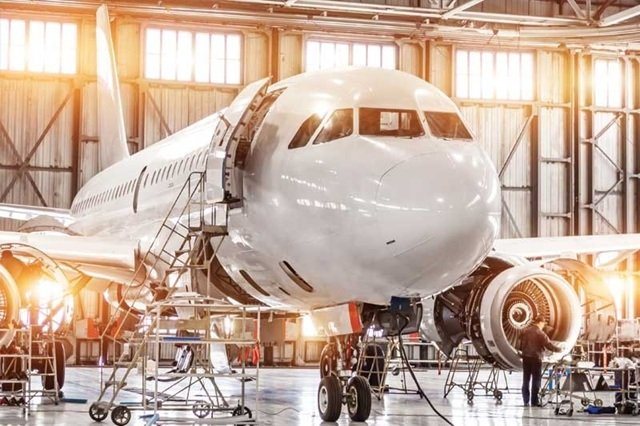Airplanes are huge, fast, and constantly flying way up in the sky. But have you ever stopped to think about how they don’t just break apart mid-air? With all that pressure, speed, and weight, it’s kind of amazing they stay together at all. The real secret isn’t just strong metal or careful design. A big reason planes are so safe and sturdy is something called aerospace prepregs. They don’t sound exciting, but these materials are doing some serious heavy lifting—literally.
What Even Are Aerospace Prepregs?
Let’s break it down. The word “prepreg” is short for “pre-impregnated.” That might sound weird, but all it means is that these materials are already soaked with a special resin before they’re used. Imagine a fabric that’s been dipped in glue—except the glue is a high-tech resin, and the fabric is made from something super strong, like carbon fiber. The resin helps the fibers stick together and gives them more strength once they’re cured (that means heated up and hardened).
These prepregs are stored cold to keep them soft and flexible. Then, when engineers are ready to use them, they lay them into molds, heat them up, and—boom—they harden into a tough, light shape. These materials are perfect for building things that need to be strong but not heavy, like airplane wings or space shuttle panels.
If you’re curious and want to see how they’re used in real-world aerospace manufacturing, this overview of Aerospace Prepregs gives a clear picture of how they work and why companies depend on them.
Why Planes Can’t Be Too Heavy
One of the biggest challenges in making airplanes is weight. The heavier a plane is, the more fuel it burns. More fuel means higher costs and more pollution. So aircraft designers are always looking for ways to cut weight without making the plane weaker or less safe.
That’s where prepregs really shine. Traditional materials, like aluminum or steel, are strong—but they’re heavy. Prepregs made from carbon fiber are strong and super light. In fact, carbon fiber prepregs can be five times stronger than steel while weighing only a fraction as much. That means the plane can be faster, more fuel-efficient, and easier to handle.
Taking the Heat (and the Cold)
Airplanes fly at crazy altitudes where the outside temperature can be around -60°C. Then they land on hot runways that can be boiling under the sun. Inside jet engines or near rocket boosters, the temperature can shoot up to hundreds of degrees Celsius. The materials in those parts of the aircraft have to handle both extremes without melting, cracking, or falling apart.
Aerospace prepregs are built to deal with this. The special resins used in them are made to resist heat, pressure, and even chemicals. That’s why they’re used in parts of planes that face the most stress, like wings, fuselages (the body of the plane), and engine parts.
Helping Planes Stay in One Piece
Planes bend. That might sound scary, but it’s true. The wings flex up and down during flight, and the fuselage can twist a little depending on the air and how fast the plane is going. If the materials weren’t flexible and strong, they’d snap under the pressure.
Prepregs help a lot with this because they’re not brittle. When cured correctly, they can handle a lot of stretching and bending without breaking. Engineers can also stack the layers of prepreg in different directions to add strength exactly where it’s needed. It’s like building a super strong puzzle where every piece is designed to do a specific job.
Where They’re Used in Aircraft
You might be surprised to learn how much of a modern airplane is made using prepregs. In some planes, over 50% of the structure is made from composite materials like carbon fiber prepregs.
Here are some of the main spots they show up:
- Wings – Need to be light, but also super strong and flexible
- Tail sections – Help control the plane and take on lots of force
- Fuselage – The main body, which faces wind pressure, temperature changes, and stress
- Engine parts – Some advanced engines use heat-resistant prepregs to lower weight and boost efficiency
- Interior panels – Even inside the cabin, prepregs help cut down weight without making things flimsy
Not Just for Planes
While airplanes are the biggest users of aerospace prepregs, they’re not the only ones. These materials are also used in helicopters, space vehicles, race cars, and even some wind turbines. Basically, anywhere engineers need something strong, light, and reliable, prepregs are an option.
Space exploration depends on these materials too. Rockets and satellites can’t afford extra weight, so composite materials are key. And when a spacecraft re-enters Earth’s atmosphere, it faces extreme heat and friction. High-performance prepregs help keep everything together during that wild ride.
Are There Downsides?
Even though prepregs are amazing, they’re not perfect for every job. First, they’re more expensive than regular metals. The resin and fibers cost more, and the process of laying and curing them takes time and care. They also need to be stored in freezers and have a limited shelf life before they go bad.
Also, not every part of a plane can be made with prepregs. Some sections still need metal for things like impact resistance or electrical grounding. So while prepregs are a big deal, they’re part of a team, not the whole story.
The Future of Flying
More and more, aircraft makers are finding ways to use prepregs in smarter ways. New types of resin are being developed that can handle even higher temperatures, or cure faster. Some companies are working on automated systems that lay down prepregs without needing so much handwork. That could make the process cheaper and faster in the future.
Electric planes and flying taxis might also use tons of prepregs to stay light enough for battery power to be practical. Even drones and smaller aircraft are getting in on the action.
What to Remember
So the next time you’re flying and looking out the window, remember this: those wings aren’t just metal slabs bolted together. They’re made using some of the most advanced materials in the world. Aerospace prepregs help keep planes strong, safe, and efficient, all while making it easier to fly farther, faster, and cheaper.
They might not be something people talk about a lot, but without them, modern air travel wouldn’t be what it is today.
If you ever hear someone wondering how planes stay in one piece, you’ll know the answer. It’s not magic—it’s smart science, careful design, and the hidden power of prepregs.

